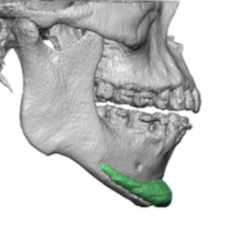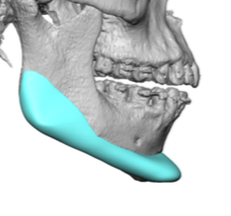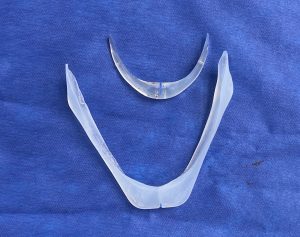Background: The most common historic and contemporary approach to lower facial augmentation is the chin implant. This is the first and oldest form of facial augmentation and the chin implant has undergone a variety of material and design innovations since its inception. Its popularity remains today as bringing forward the anterior projection of the lower jaw provides one of the most effective and simplest forms of facial reshaping surgery.
Despite the positive benefits of chin implant surgery, it provides an incomplete lower face/jaw augmentation effect. It does not create a well defined jawline if one is looking for that effect to go all the way back to the jaw angles. This can be created by the addition of standard jaw angle implants, either at the time of the chin implant or secondarily, and for some patients this produces a satisfactory result. But a complete and connected jawline augmentation can only come from a custom designed implant to do so. Some chin implant patients will graduate directly to that approach not only because of its connectivity all the way around the jawline but because of the capability of designing it specifically for them. In that regard the indwelling chin implant provides a guide as to how to create an improved front end of the jawline implant.
While a wraparound jaw implant provides the structural support and push on the overlying soft tissues to create a more defined lower third of the face, the thickness of the tissues above and below it has an influence on its eventual shape. For this reason some patients will benefit by defatting around the jawline. While defatting of the neck by liposuction can cover the entire area below the jawline, above it there are more limited defatting options. These include buccal lipectomies and perioral and lateral facial small cannula liposuction. While such defatting reductions rarely produce dramatic changes they can provide a complementary effect to that of a custom jawline implant.
Case Study: This male had a congenitally short lower jaw and a rounder fuller face. He initially had an anatomic chin implant placed (8mm projection) which was well placed (by 3D CT scan) and provided some good improvement. But as time progressed and he got used to the improvement further lower facial enhancement was desired.

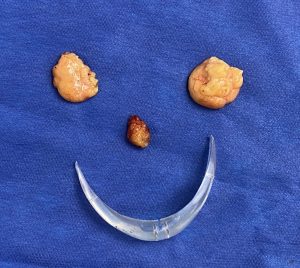
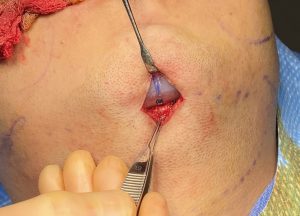
The chin implant represents a safe and less traumatic approach to improving the shape of the lower face. Some chin implant patients, after seeing their results, may opt for further jawline size and definition improvement. Taking an implant and wrapping it around the inferolateral border of the entire lower jaw is the most definitive approach to doing so.
Case Highlights:
1) The initial chin implant patient may eventually graduate to a more complete lower facial augmentation effect with a custom jawline implant.
2) The indwelling chin implant provides a useful guide for designing the anterior part of the custom jawline implant.
3) To help improve the effects of a custom jawline implant, defatting above and below the jawline is often done.
Dr. Barry Eppley
Indianapolis, Indiana



